Ever tried to picture how long 500 feet really is? Unless you walk around with a tape measure in your back pocket, it’s not exactly an easy distance to visualize. Is it a short stroll, a skyscraper’s height, or maybe the distance to your car when you forget where you parked? The truth is, 500 ft sits right in that awkward zone between “close enough to walk” and “too far to yell.” In this guide, we’ll unpack how long 500 feet actually is in ways that make sense mixing real-world comparisons, surprising facts, and a touch of humor so you’ll never guess wrong again.
What 500 Feet Means
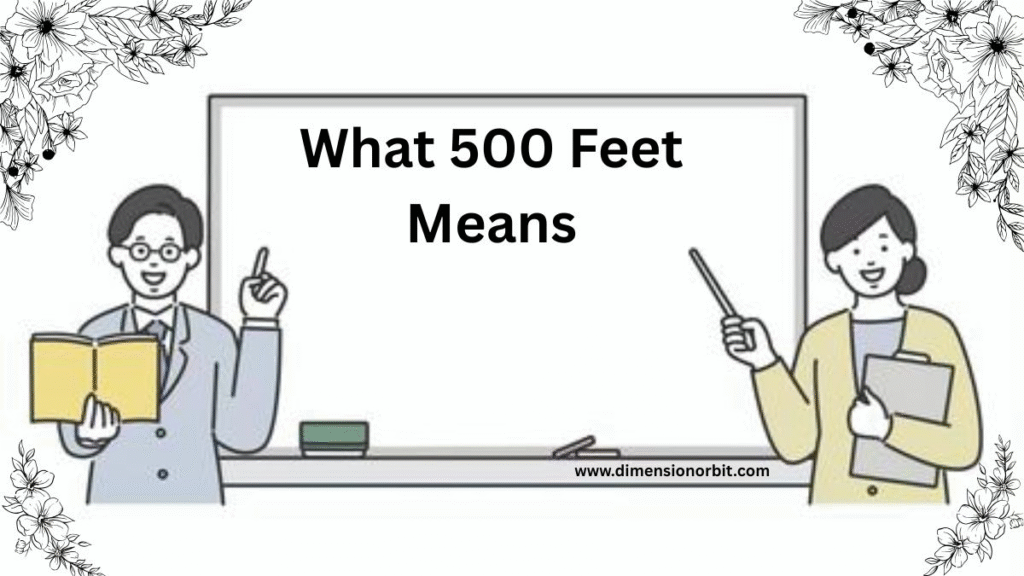
Converting 500 Feet Into Other Units
Sometimes it helps to see a measurement in several formats.
- 500 feet = 152.4 meters
- 500 feet = 166.67 yards
- 500 feet = 0.095 miles
That means 500 ft is just under one tenth of a mile, or about 150 meters. It’s a comfortable distance for a short walk, a modest property span, or a low-rise building height.
Everyday Objects That Are 4.5 Inches Long
Where You Might Encounter 500 Feet
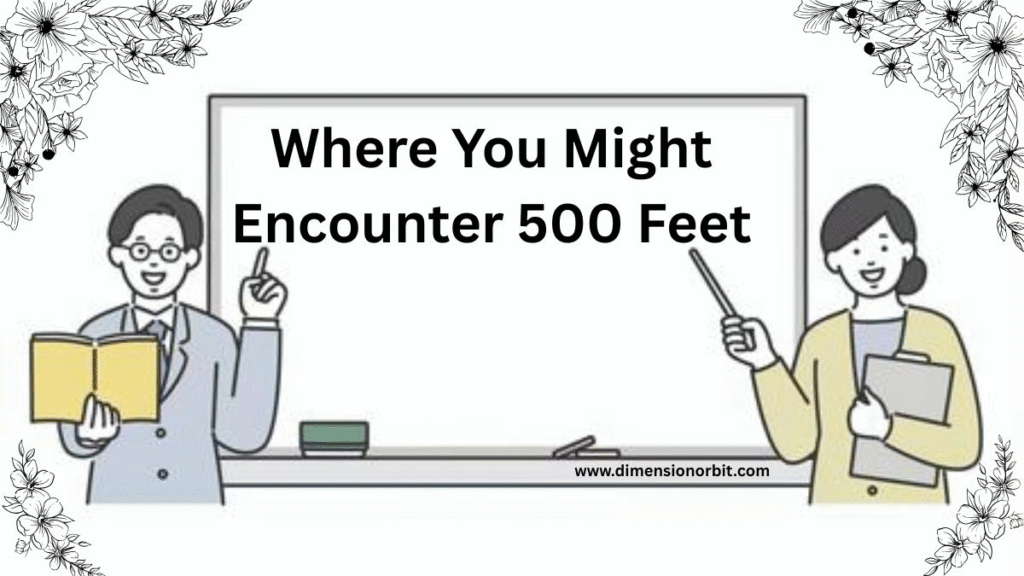
This measurement appears in everyday life more than you’d think.
- Real estate and land mapping often use 500 feet for zoning buffers or property boundaries.
- Drone pilots follow a 400 to 500 foot altitude limit in many regions.
- Sports, construction, and event planning regularly involve layouts around this distance.
Knowing how far 500 feet stretches helps you gauge scale, spacing, and proportion more accurately in all kinds of settings.
How Big Is 500 Feet on the Ground
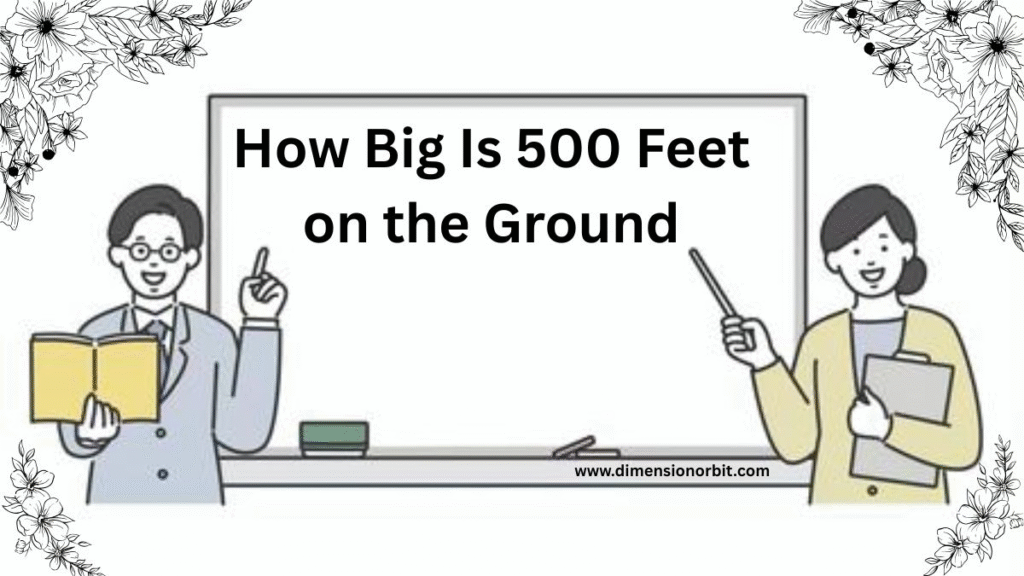
On the ground, 500 feet feels long but not overwhelming. To put it into perspective, an average adult step measures about 2.5 feet. Walking 200 steps gets you to roughly 500 feet.
In city layouts, one block in Manhattan is roughly 264 feet, so walking one and a half blocks equals about 500 feet. If you’ve ever crossed a large parking lot or walked across two suburban house lots, that’s roughly the same span.
| Conversion Type | Equivalent |
|---|---|
| Steps (average adult) | 200 steps |
| Yards | 166.7 yards |
| Meters | 152.4 meters |
| Miles | 0.095 miles |
How Big Is 4 Inches? 14 Common Things
How High Is 500 Feet
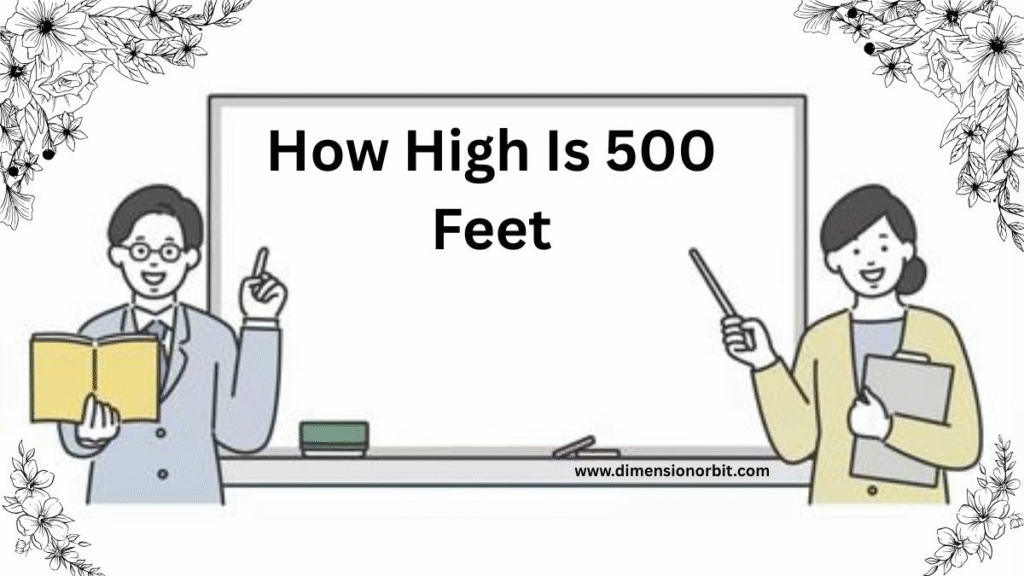
Vertically, 500 feet starts to feel impressive. If you’ve ever stood beneath a tall downtown tower or office building, you’ve seen something close to that height. Each story in a modern office building averages around 10 feet, so 50 stories come to about 500 feet.
It’s also close to the height of the Washington Monument in Washington D.C., which reaches 555 feet. Looking up at that landmark gives you a powerful sense of what 500 feet feels like as a vertical space.
To give you another sense of scale, the Eiffel Tower in Paris rises to 1,083 feet; half of that structure is roughly 500 feet. The Blackpool Tower in the UK measures about 518 feet, placing it almost exactly at this height.
| Structure | Height (feet) | How It Relates |
|---|---|---|
| 50-Story Building | 500 ft | Same height |
| Washington Monument | 555 ft | Slightly taller |
| Eiffel Tower (half) | 541 ft | Nearly identical |
| Blackpool Tower | 518 ft | Very close |
These comparisons show just how striking 500 feet can be when you’re standing at ground level looking up.
How Far Is 500 Feet to Walk
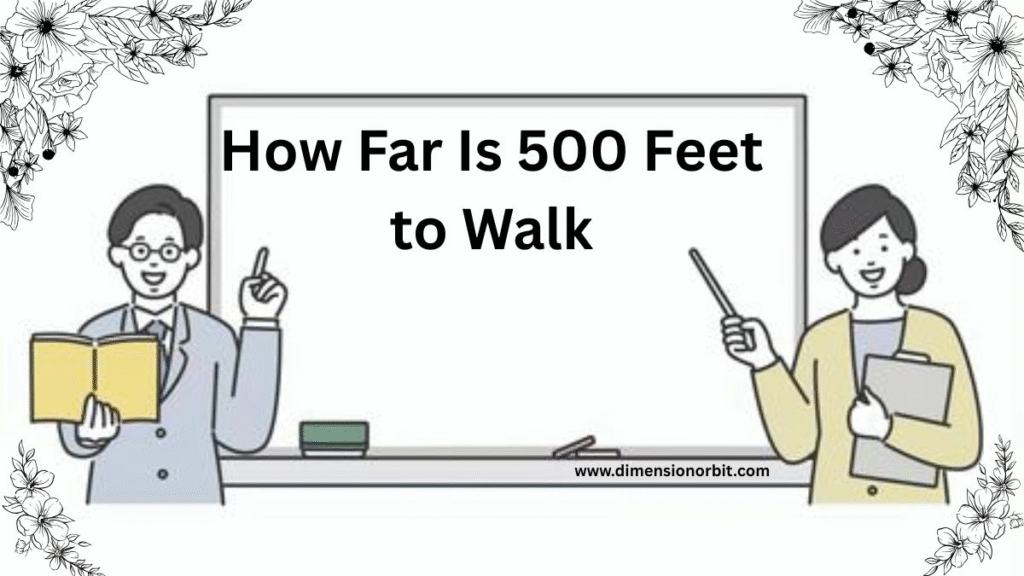
Walking 500 ft doesn’t take long at all. The average walking pace for an adult is around 3 miles per hour. At that speed, it takes roughly 2 minutes to walk 500 feet.
That’s about the distance from one end of a grocery store parking lot to the other, or from a stadium entrance to the far corner of the field. In short, it’s a quick, casual stroll.
A few other ways to think about it:
- 500 feet ≈ one-tenth of a mile.
- Most people can jog that distance in less than a minute.
- At a brisk walk, it’s about the length of two large shopping aisles back to back.
It’s useful to keep this mental image when estimating travel time on foot, planning outdoor spaces, or setting up event areas.
How Long Is 300 Feet? 8 Comparisons
Everyday Objects and Landmarks Around 500 Feet
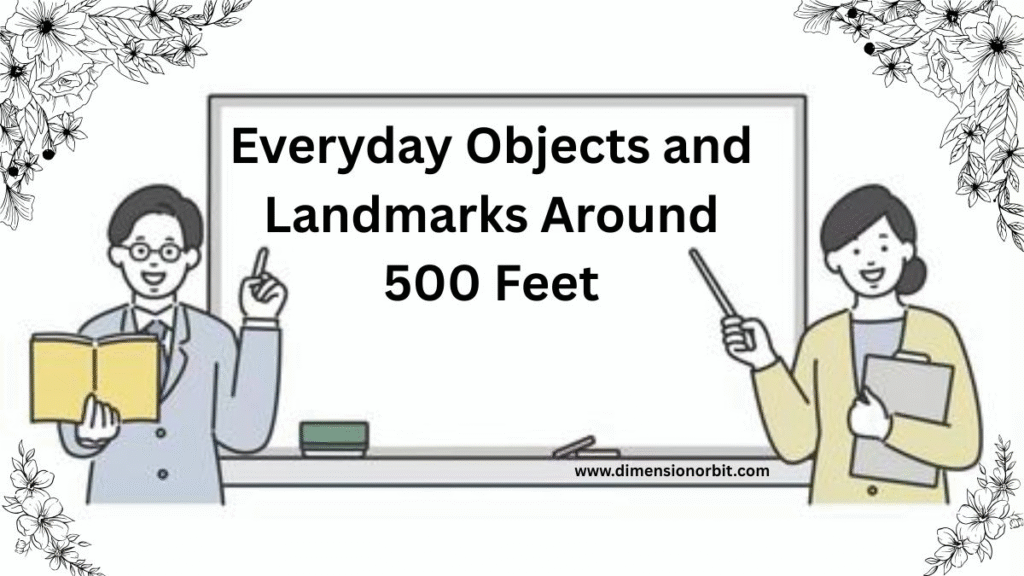
To truly grasp this measurement, it helps to match it with things you already know. These references stay in your mind because you’ve seen or experienced them.
One and a Half Football Fields
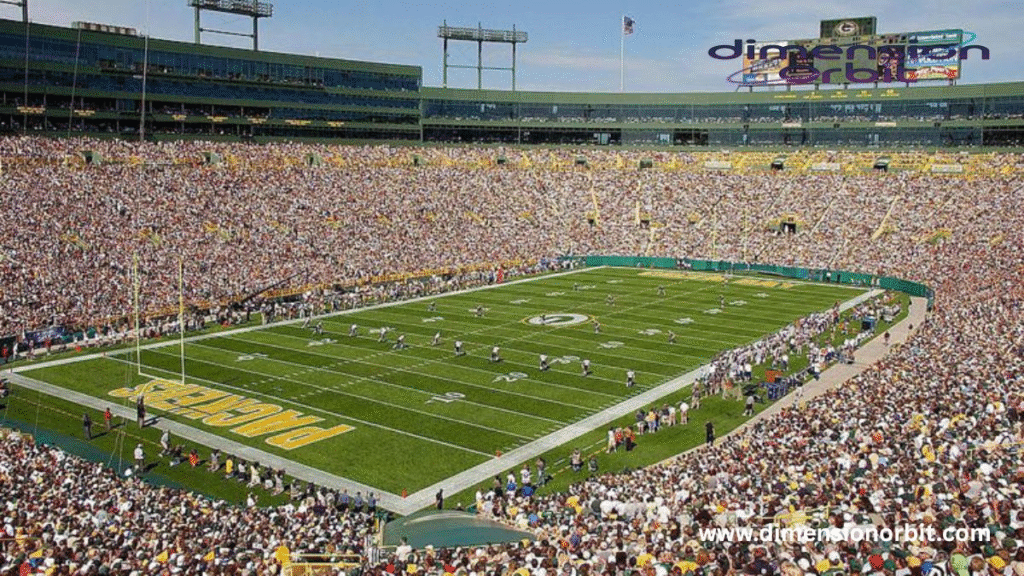
A full American football field including end zones is 360 feet. Add roughly half of another field, and you have your 500 feet span.
Next time you’re watching a game, picture a play running the full field and another 40 yards. That’s about the right distance.
Three Olympic Swimming Pools
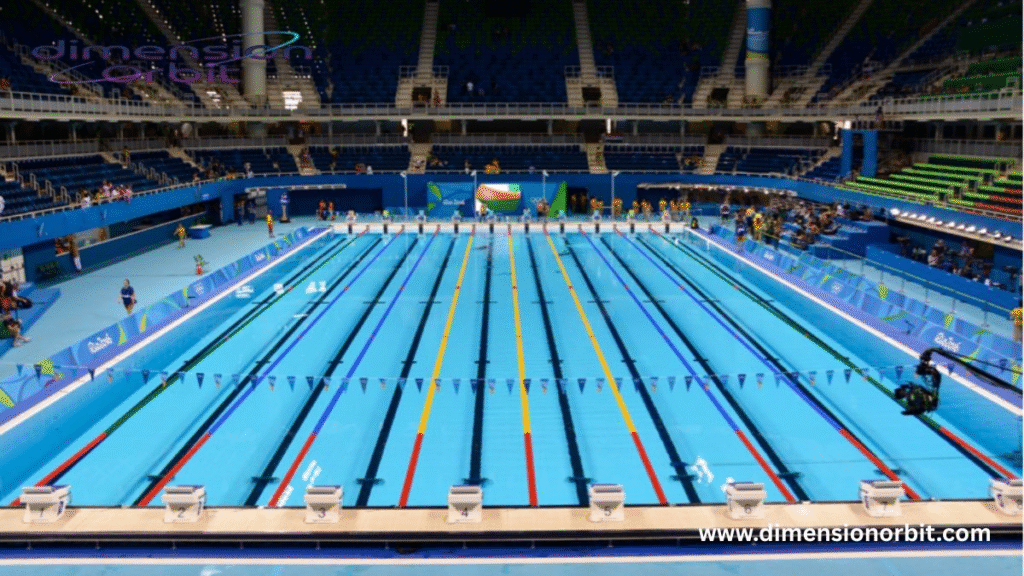
Each Olympic pool measures 50 meters, or 164 feet, in length. Line up three of them end to end and you reach nearly 500 ft (492 ft to be exact).
That’s a great way to visualize the number without any calculation just think of three long pools side by side.
Half a Large Cruise Ship

Modern cruise liners like the Wonder of the Seas stretch around 1,188 feet. Half of that is almost exactly 500 ft.
If you walked from the bow to the midsection of such a ship, you’d travel that distance easily.
Half the Eiffel Tower
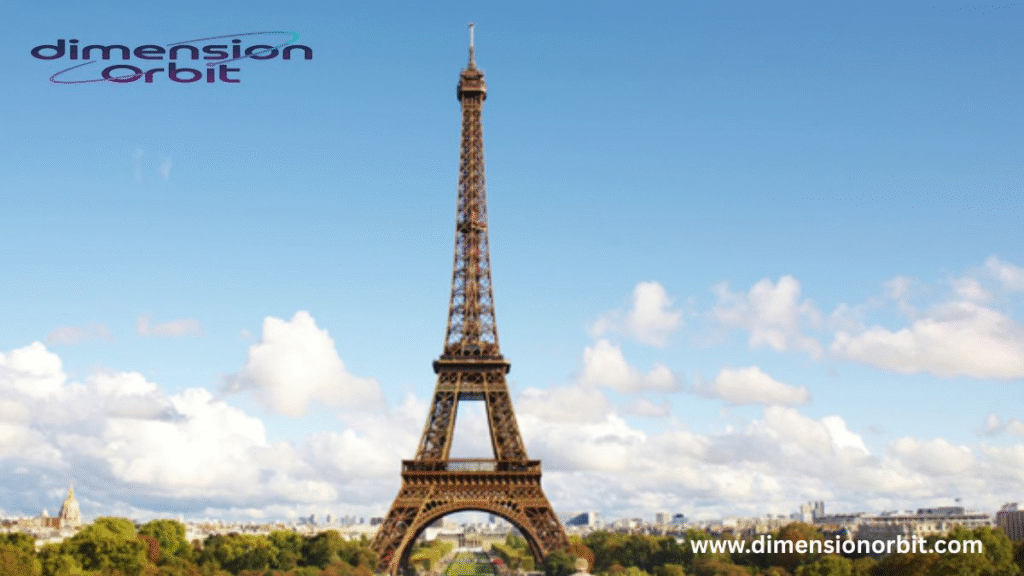
The Eiffel Tower stands 1,083 feet tall. Half its height gives you 541 feet close enough to see what 500 ft means when looking upward from the ground.
Two City Blocks
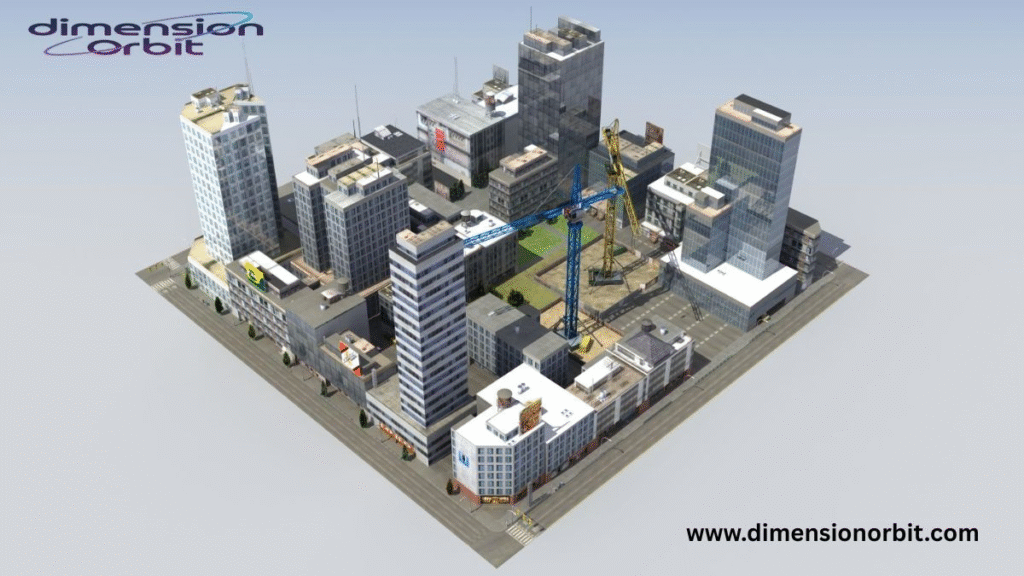
In many U.S. cities, a block runs between 250 and 400 feet. Two connected blocks average 500 to 800 feet, depending on the city.
Walking that span downtown, from one intersection to the next and beyond, feels close to covering 500 ft.
A 50 Story Building

Modern high-rises with 50 floors often reach right around 500 ft. If you live in a major city, imagine one of those towers you pass on your commute that’s about the same height.
The Washington Monument
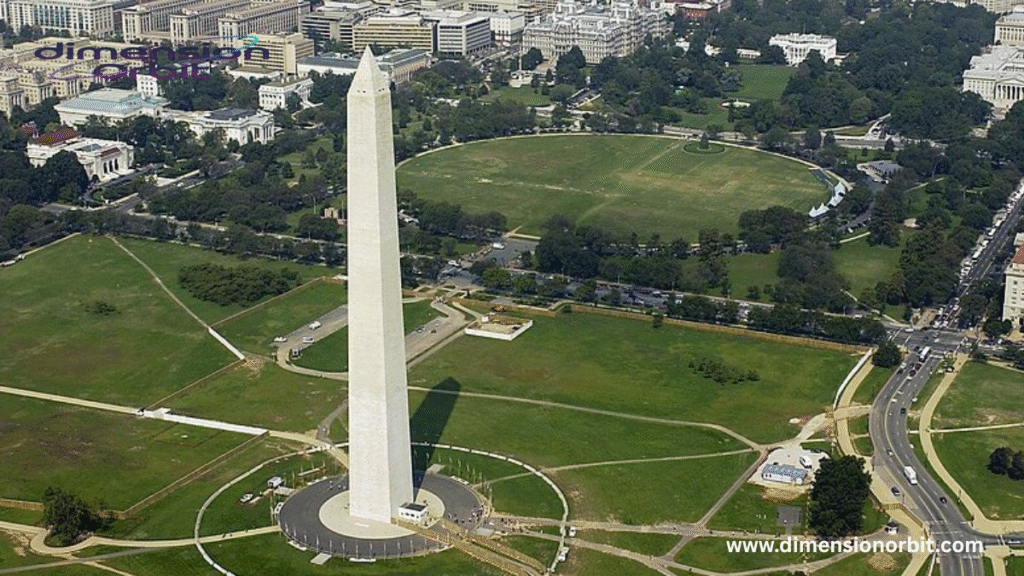
Standing 555 feet tall, this U.S. landmark is almost identical in scale to 500 ft. Seeing it in person leaves a lasting impression of how high that distance truly is.
Blue Whales

A blue whale averages roughly 100 feet from nose to tail. Line up five of them, and you’d have a span just over 500 ft. That visual works both for length and awe.
The Blackpool Tower

Located in England, this iconic seaside tower reaches about 518 feet almost the perfect benchmark for our discussion. Its height captures the feel of a full 500 foot measurement in one glance.
A Section of an Airport Runway
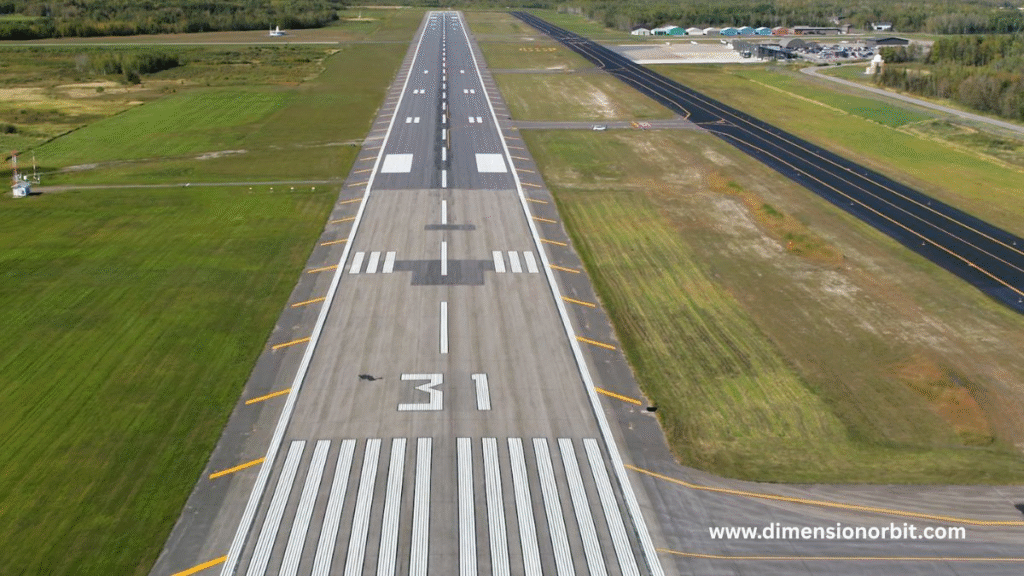
Most commercial runways display white markers every 500 ft to help pilots gauge distance during takeoff and landing. If you’ve looked out the airplane window and spotted those marks racing by, you’ve literally seen 500 foot segments scrolling beneath you.
A Deep Center Baseball Hit
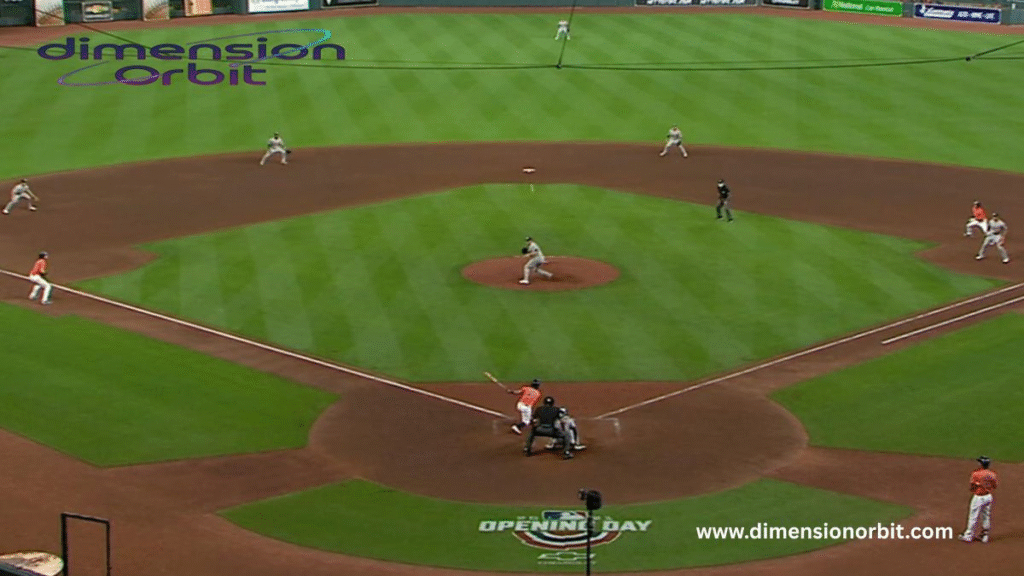
Major league parks like Coors Field and Comerica Park feature center field walls between 480 and 500 ft from home plate. A power hitter launching a ball there covers roughly the distance we’re describing.
Large Semi Trucks in a Row

A single tractor trailer is around 50 feet long. Line up ten of them bumper to bumper and you reach almost exactly 500 ft. It’s a handy mental cue because everyone has seen trucks on the highway.
Quick Comparison Chart
| Reference | Measurement (feet) | Relation to 500 ft |
|---|---|---|
| Football Field | 360 ft | 1.4 fields |
| Olympic Pool | 164 ft | 3 pools 492 ft |
| Eiffel Tower (Half) | 541 ft | Slightly longer |
| Washington Monument | 555 ft | Almost identical |
| Blue Whale | 100 ft | Five = 500 ft |
| Blackpool Tower | 518 ft | Very close |
| City Blocks | 250–400 ft each | 2 blocks |
| Cruise Ship (Half) | 500–600 ft | Comparable |
| 50-Story Building | 500 ft | Same height |
| 10 Semi Trucks | 500 ft | Equal span |
Why Understanding 500 Feet Matters
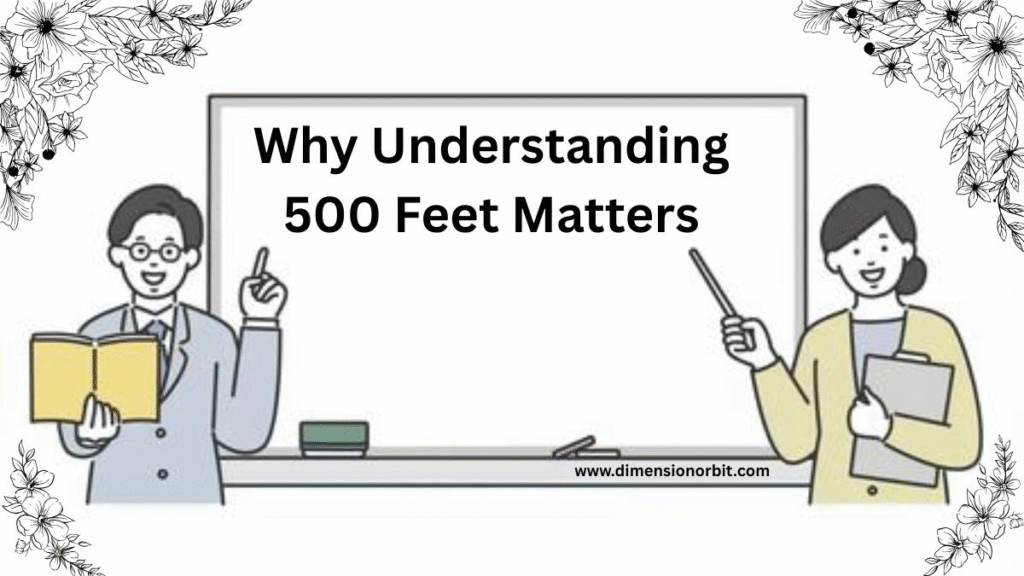
Practical Applications
Being able to visualize 500 feet isn’t just trivia it’s useful.
- Real Estate: Helps estimate property lines and lot boundaries without exact measurement.
- Aviation: Drone pilots must keep their craft below 400 ft, so recognizing the difference up to 500 ft ensures compliance.
- Construction: Knowing how large 500 ft feels helps with site planning and material estimation.
- Event Planning: When laying out concert stages, parking zones, or walking routes, visualizing the space ensures smoother logistics.
Perception and Human Scale

Humans often underestimate large open distances. Without a visual anchor, numbers blur. But linking a measurement like 500 ft to everyday sights helps our brains calibrate space better. That awareness improves navigation, design, and even safety decisions.
Ways to Visualize 500 Feet
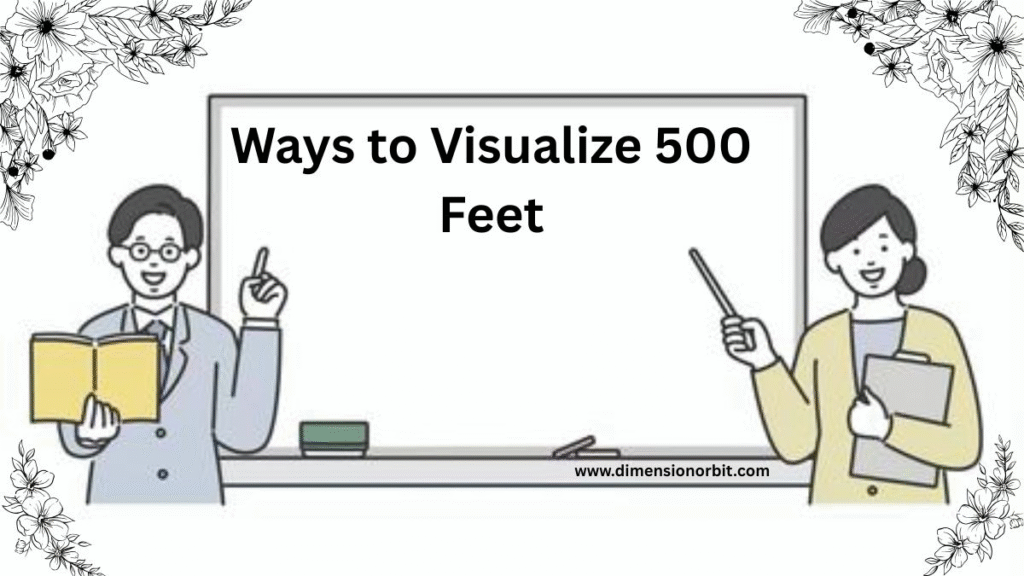
Here are several easy techniques to keep this measurement fresh in your mind:
- Step Counting – Take 200 average steps; you’ve covered about 500 ft.
- Map Tools – Use Google Earth or smartphone ruler features to mark 500 ft from your current spot.
- Urban Reference – Think of one and a half football fields or two short city blocks.
- Vertical Reference – Imagine a tall 50-story building.
- Vehicle Reference – Visualize ten big rig trucks parked nose to tail.
Once you practice seeing it, 500 ft becomes intuitive.
Interesting Facts About 500 Feet

- A person standing 500 ft away still appears clearly visible in daylight, though facial details fade.
- Sound takes roughly half a second to travel 500 ft.
- Fireworks displays often launch shells to 400–500 ft for safety and visual spread.
- At 500 ft altitude, a drone can capture a wide aerial view of roughly 1 mile radius.
- The FAA’s limit for hobby drones is 400 ft, making 500 ft an upper reference for professional operations.
These small bits of data anchor the number in different contexts from physics to recreation.
A Closer Look:
Let’s translate this into relatable scenes.
- At the beach: The distance from the shoreline to the back of a large parking area.
- In a mall: Walking from one anchor store to another across the main concourse.
- At work: From your office building to a nearby coffee shop.
Each scenario brings the number closer to your daily routine and cements it in memory.
Mindset Shift:
When you start to notice distances like 500 ft in your environment, spatial awareness improves dramatically. You might judge parking spaces more accurately, gauge how long a trail really is, or understand why drone height restrictions matter.
Developing this spatial intuition connects numbers to real-world experience and that’s far more powerful than memorizing conversions.
Digital tool
Digital tools like Feet and Inches Calculator can convert inches to centimeters or feet instantly. Many smartphone apps now offer augmented reality measuring features, allowing you to gauge objects virtually and compare them to known lengths.
FAQs
Is a football field 500 feet?
No, a standard American football field, including the end zones, measures 360 feet long. That’s about 140 ft shorter than 500 ft. In other words, 500 ft equals roughly 1.4 football fields placed end to end.
How many car lengths is 500 feet?
The average car is about 14 to 15 feet long. Divide 500 by 15, and you get roughly 33 car lengths. So, 500 ft equals a line of about 30–35 cars parked bumper to bumper.
What is 500 feet tall?
A 50-story building stands close to 5 feet tall. It’s also about the same height as the Washington Monument (555 feet) or half the Eiffel Tower (541 feet). Picture a skyscraper soaring 50 floors high that’s what 500 ft looks like vertically.
How far is 500 feet in miles driving?
Five hundred feet equals 0.095 miles, or just under one tenth of a mile. When driving, you’d cover that distance in about one to two seconds at highway speeds blink, and you’ve already passed it.
How far is 500 feet away?
Five hundred feet is a short but noticeable distance you can walk it in around two minutes at a normal pace. It’s about the same as walking across one and a half football fields or two city blocks.
How far is 500 ft?
It’s 152.4 meters, 166.7 yards, or 0.095 miles. Whether you’re measuring for a drone flight, a property line, or just curiosity, 500 ft is a moderate distance farther than it sounds, but not too far to walk in a couple of minutes.
How many stories is 500 feet?
In most modern buildings, each story measures around 10 feet in height. That makes 500 ft equal to roughly 50 stories. Some high rises have taller floors, so the exact number can vary between 45 and 55 stories.
Conclusion
So, how long is 500 feet? It’s about 152 meters, 166 yards, or one tenth of a mile. It matches the height of a 50 story building, the length of one and a half football fields, or the walk across a couple of city blocks.
This single measurement bridges the gap between abstract numbers and the physical world. Whether you’re estimating distances, visualizing architecture, or following safety guidelines, remembering what 500 ft represents will help you think in real, tangible terms.

Jhon AJS, the author of Dimension Orbit, is an experienced blogger fascinated by the mysteries of existence. He explores every type of dimension from scientific to spiritual with clarity and creativity. Jhon’s engaging writing style invites readers to think deeper, question reality, and discover new perspectives on the universe.





